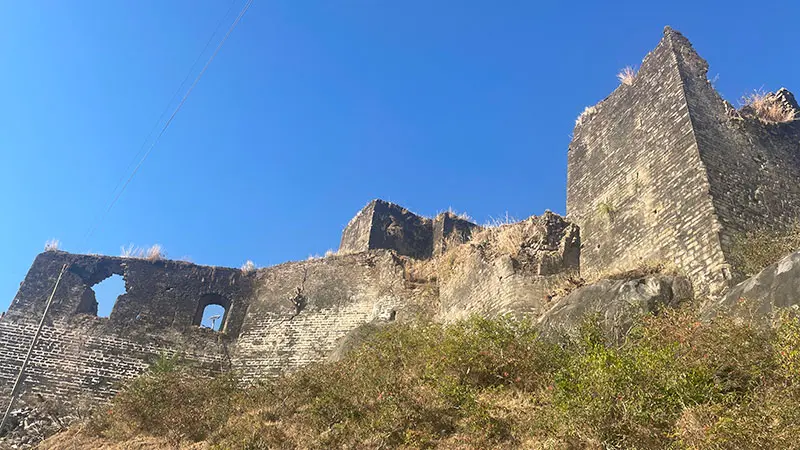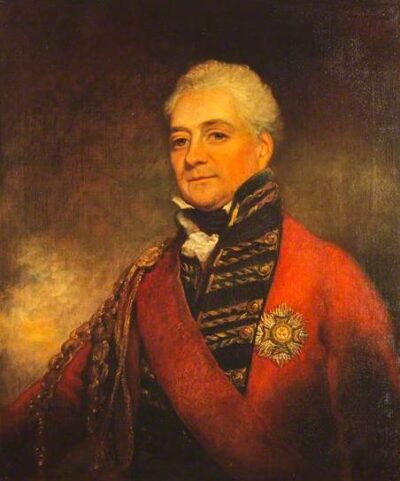Himachal
Places to visit
Malaun Gorkha Fort

Visit the historic Gorkha fort of Malaun in Himachal Pradesh — the last standing witness to the finale of Anglo-Gorkha war in the hills — before it crumbles down.
Malaun Gorkha Fort Video
Along the border of Bilaspur and Solan in Himachal Pradesh stands on a hilltop the remains of the historic fort of Malaun, overlooking low hills of these two districts.
More than 200 years back, the final battle of the Anglo-Gorkha had taken place on a ridge here for the Malaun fort. It was here the legendry Gorkha warrior Bhakti Singh Thapa had died while fighting off the British forces and their cannons with just a sword in his hands.
It was here at the Malaun fort that the celebrated Gorkha army general Amar Singh Thapa, who once ruled the mountains of present-day Uttarakhand and Himachal Pradesh, had surrendered to the British forced led by Major General David Ochterlony, ending the Anglo-Gorkha war in the hills.
How to reach the Malaun fort?
The Malaun fort is accessible from both Solan and Bilaspur districts of Himachal Pradesh. But the best route is via the Bilaspur district. You first need to reach Swarghat in Bilaspur district. Some 10 kms from Swarghat on the Manali road (the old highway), follow a narrow link road that takes you to Malaun village, situated at a distance of some 20 kms, in Solan district bordering Bilaspur.
From the road up to the fort, you need to do a small trek, which goes up along fields and few houses on the way. We also saw a bauri, a natural drinking water body, a rarity these days in the hills, on the way. You reach the fort in less than an hour.

When was the Malaun fort built?

Led by Amar Singh Thapa, the Gorkha army had built a number of forts in the present-day Himachal Pradesh, mostly in Solan district, after defeating local Rajas and petty chiefs between 1804-1815. Most parts of the present-day Solan district then came under the Baghal princely state.
The forts were built at Sabathu, Banasar and Malaun etc as outposts for the Gorkha army even as Thapa made the nearby Arki his capital and ruled the hill states from there. Overlooking the plains, the Gorkha forts also acted as watch towers and once symbolised the Nepalese rule in the hills.
The scene of the final battle at Malaun fort


The inevitable war between the British forces and the Gorkha army had sparked off in the winters of 1814 for control over a vast Gorkha kingdom whose territories extended for more than 600 miles in distance from the hills of Kumaon and Gharwal to the present-day Himachal Pradesh.
By January, Ochterlony had started closing in after seizing the nearby forts of Nalagarh and Ramgarh, forcing Amar Singh Thapa to leave Arki and station himself along with about 3000 of his troops at Malaun fort, the scene of final action. Ochterlony also cut off the supply lines and all communications to the fort by seizing the hilly areas around Malaun, further weakening Thapa’s position. However, the British assault on the fort was delayed due to ‘severe winters.’
Bhakti Singh Thapa and the two Satis

The British forces resumed their campaign in the April of 1815, defeating Gorkha forces in small battles while slowly moving up towards the fort from the foot of the Malaun hills. Realising the collapse of Malaun fort was imminent, Amar Singh Thapa placed the entire force under the command of Bhakti Singh Thapa, the 74-tear-old legendry Gorkha warrior, in a last-ditch effort to drive the advancing British forces down the mountain.
At the daybreak on April 16, 1815, in a show of great courage, Gorkha forces led by Bhakti Singh Thapa attacked the British soldiers along the ridge in front of the Malaun fort.
“The Gorkhas displayed the most undaunted resolution, advancing to the very muzzles of the guns, killing almost all those firing the arms,” writes Horace Hayman Wilson in his book ‘The History of British India from 1805 to 1835.’
The battle lasted for two hours as the British force, superior in numbers and arms, drove the still alive Gorkha soldiers back to the fort. The Gorkha forces retreated, leaving the body of their brave commander Bhakti Thapa on the battlefield.
As a mark of respect, the body of Thapa was wrapped in a shawl by British soldiers and sent to the fort. The next day, Bhakti Thapa’s two wives committed Sati, a widow-burning custom, which was practiced by Hindus in India.
“On the following day, two of his (Bhakti Singh Thapa) wives burnt themselves with his corpse in the sight of both armies,” writes Wilson.
English explorer William Moorcroft also mentions the Malaun fort, in his book ‘Travels in the Himalayan Provinces of Hindustan and the Panjab’ saying “the fort, which was taken by Sir David Ochterlony from the Gorkhas.”
When Moorcroft had visited this area during his travels in the Himalayas after the end of the Anglo-Gorkha war in the 1820s he had also found “a pile of stone upon an eminence to mark the spot where Bhagti Thapa, one of the Gorkha commanders, was killed.”
Amar Singh Thapa’s surrender and formation of Nasiri battalion

With all the supply lines cut and most of his soldiers dead, Amar Singh Thapa, who was still holding the Malaun fort, surrendered almost a month later on May 11, 1815, a day after British forces had opened cannon fire on the fort. Thapa’s son Ranjor Singh, who was holding the Jaitak fort in Nahan in the present-day Sirmaur district of Himachal Pradesh, also surrendered around at the same time.
Thapa family members were allowed to return to Nepal with their private property and military equipment. Many Gorkha soldiers, who were offered to join the British forces by David Ochterlony after witnessing their valour on the battlefields, stayed back and the first Gorkha regiment was raised in 1815 and called ‘First Nasiri Battalion’ with the nearby Sabathu as its headquarter. Nasir, a Hindustani word, means ‘friendly or loyal.’

Interestingly, Ochterlony, who had defended Delhi from the Marathas in 1804 had been given the honorary title of Nasir-ud-Daula (Helper of the State). So, it can be safely deduced that the first Gorkha battalion was named after Ochterlony only and the ‘peculiar’ name Nasiri meant ‘Ochterlony’s own’ at that time. In the present day, the 1st Gorkha Rifles, which has its headquarter in Sabathu, is also known as the ‘Malaun Regimen’ and named after the Malaun fort where its origin lies.
After the surrender, the British forces kept control over the Malaun fort as well as Jaitak fort in Sirmaur.
According to an official communication of May 28, 1815 between J Adams, a Secretary to the British Government, and David Ochterlony, “The Governor General has approved your suggestion for retaining the heavy ordnance in the forts of Malaun. It is His Lordship’s opinion that the garrison of both Malaun and Jaitak be composed of irregular troops (Gorkhas or other hill tribes).
Present condition of the Malaun fort

Today, the fort is lying in ruins, just like the other Gorkha forts of Banasar and Sabathu, unknown to the outside world and slowly crumbling down.
The outer walls of the fort have been collapsing and inside even the remains of this historic structure have slowly been disappearing. The stone-built structure of the fort is being replaced by a temple. Once where stood the rooms of the fort, is now a temple and its various wings including a dharamshala (a rest house).
The local administration or the government have never made any effort to preserve the fort by renovating it. When we reached the fort in the winters of 2023, the work was on to build more rooms for the temple. The fort now appears more of a temple from the inside.


The remains of the crumbling fort are lying in complete obscurity. Nowhere on your way, will you find a single sign guiding the way to the fort. One needs to ask the villagers for the way.
According to local villagers, there were also few cannons, left from the days of the battle at the fort, but were shifted to Sabathu some time back.
The sheer criminal apathy of the government towards such a historic place is mind-boggling and unforgiving. It’s so blatant that the neglect of this fort by the government seems to be but a deliberate and silly attempt to erase this particular past.
A time is about to come in not too distant a future when the Gorkha fort will completely disappear from Malaun. There will just remain a temple.

References:
‘The History of British India from 1805 to 1835’ by Horace Hayman Wilson.
Record of the Ludhiana Agency.
‘Travels in the Himalayan Provinces of Hindustan and the Panjab’ by William Moorcroft.
‘A Special Corps — The Beginnings of Gorkha Service With The British’ by AP Coleman.






Great to learn about the past Heroes of Himachal Pradesh, who fought the Britishers. Their legacy should be preserved for the future generations, otherwise their rare sacrifices will be lost in time forever.